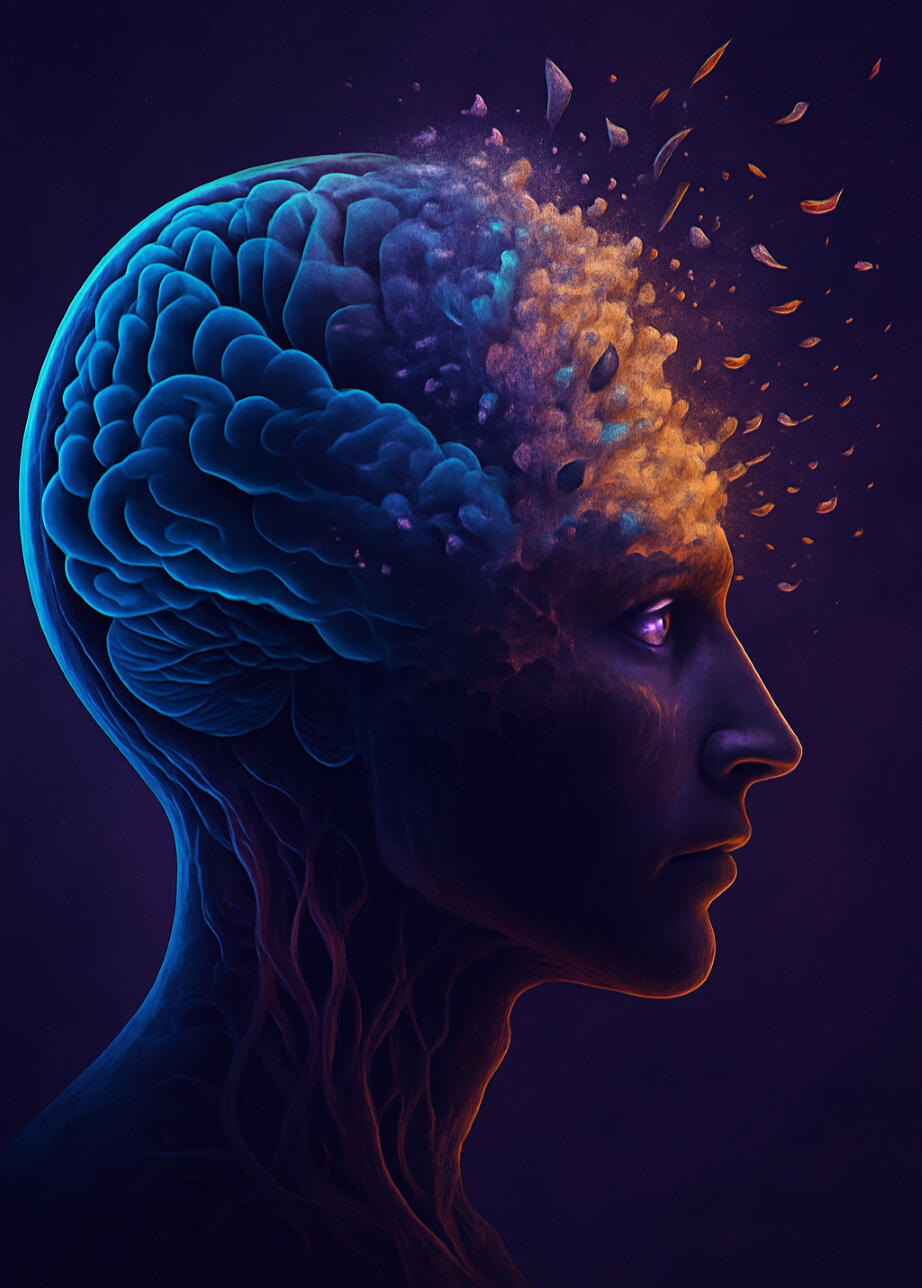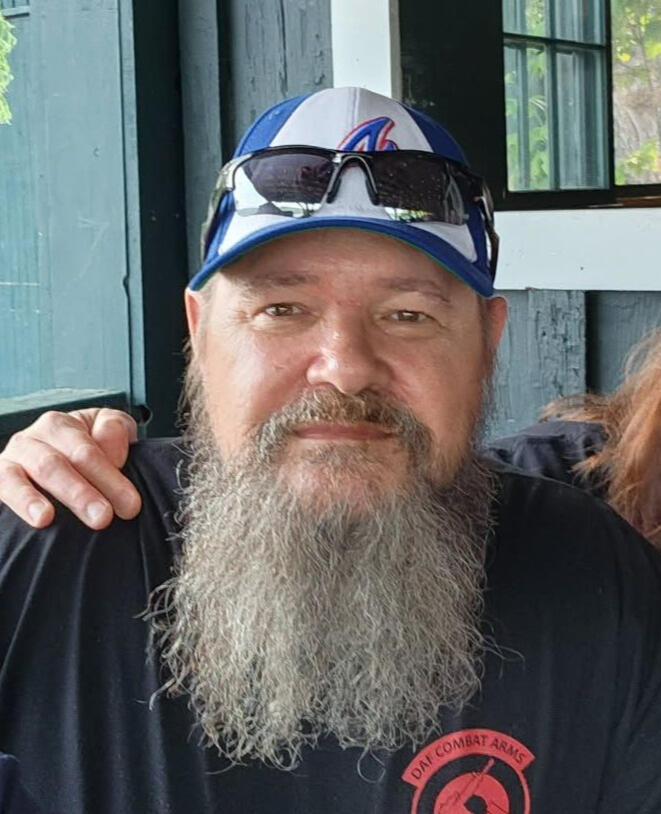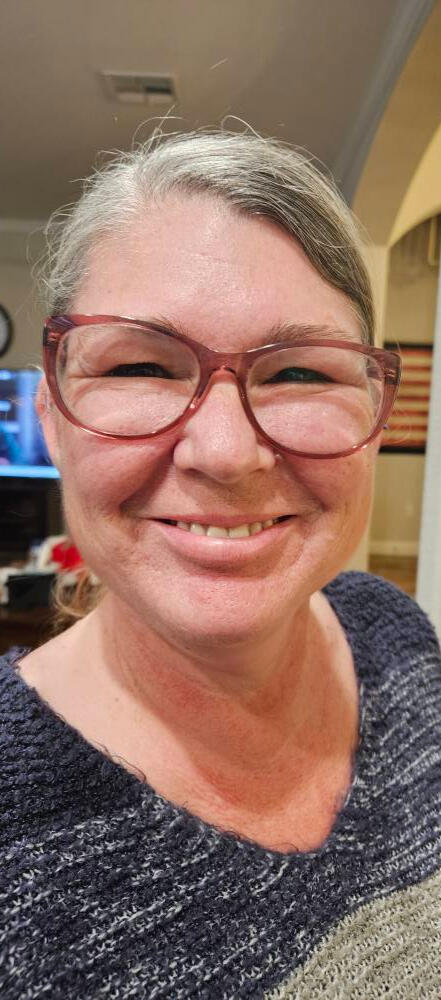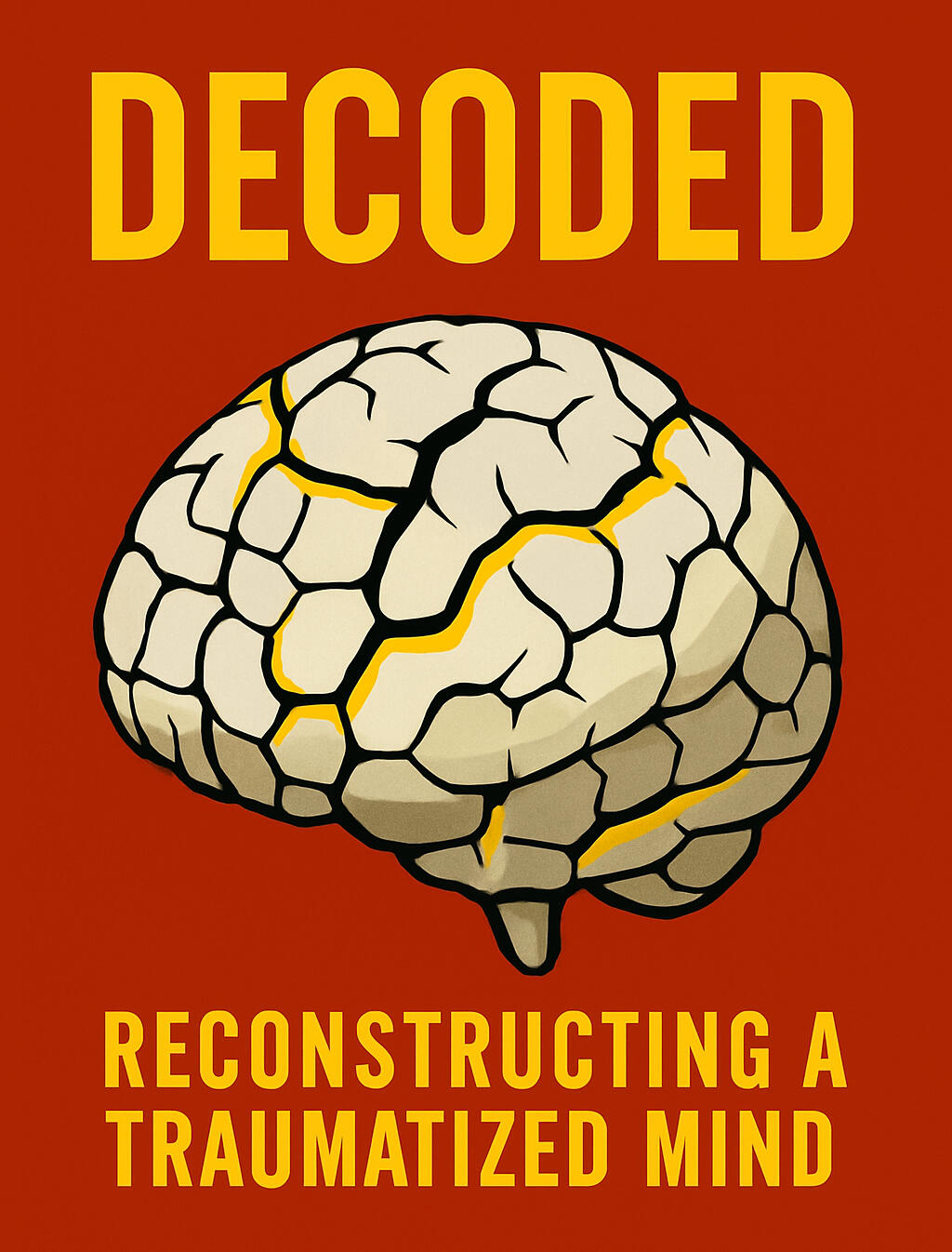DECODING TRAUMA.ORG
You don't need a label. You need a way out.
Lived by a trauma survivor. Built by a trauma survivor. For those still surviving.


Start Healing Here
You don’t need another lecture. You need a framework.
One that makes sense, cuts through the noise, and actually works.This is where we start:* What is trauma and how it changes your mind—literally.
* Why therapy may have failed you.
* And how real healing begins when you understand what trauma actually did to you.Ever get tired of the lack of progress in "getting over" your trauma? The "why" of the ineffectiveness on therapy for you? You're not alone. I've been there, and this is a meeting place for folks like us.I'm not a mental health expert, nor a licensed therapist. I'm simply a person who has spent 35 years in the seat facing that therapist...and finally called bullshit, there's gotta be a better way.This is from one survivor to another. Let's walk together.
Let's Walk Together...

What is Trauma?
Trauma isn’t just what happened. It’s what stayed—in your body, your thoughts, your relationships, your silence.It’s the part of you that still flinches at a tone of voice. The moment you shut down in a conversation and don’t even know why. It’s waking up tired even after eight hours of sleep, because your nervous system never really rested. It’s the haunting belief that maybe you’re too broken to fix.Trauma isn’t just war or abuse or catastrophe. It’s also what you never got—safety, love, truth, stability, permission to feel.Modern science defines trauma as anything that overwhelms your ability to cope, leaving behind a lasting imprint on the brain, body, and sense of self. It fractures the bridge between your mind and your emotions, your past and your present. And often, it rewires your system for survival instead of connection.But trauma doesn’t get the final word.This project, Decoded, exists for people trying to find their way back—from chaos, from numbness, from shame, from the unbearable weight of what they’ve carried too long. It’s for those who are tired of coping and finally ready to heal.And it begins by calling trauma what it is: not weakness. Not failure. But an injury with a path back.
Effects of Trauma
“You don’t just walk away from trauma. You carry it—until you learn how to stop letting it carry you.”Trauma doesn’t just bruise the mind. It reshapes the way we think, feel, react, and relate. Sometimes subtly. Sometimes in ways that shatter who we used to be.And it doesn’t stay in just one part of us. It spreads—into the nervous system, into relationships, into our sense of identity, purpose, and safety in the world.Let’s break this down.What Trauma Does to the Mind
Trauma rewires your mental architecture. It can cause:FirsHypervigilance – Always scanning for danger, even when you’re safe.
Rumination and Overthinking – Trapped in mental loops you can’t silence.
Cognitive fog – Trouble concentrating, making decisions, or recalling information.
Emotional confusion – Feeling too much, feeling nothing, or not knowing what you feel at all.
Mistrust of your own thoughts – Wondering if your reactions are justified or just “crazy.”t itemFor many, trauma splits the brain into two warring sides: one trying to keep control, the other overwhelmed by fear or shame. You may become detached from your own internal signals—unsure if your instincts are worth listening to. That’s not weakness. That’s trauma disrupting your mental signal system.What Trauma Does to the Body
The body keeps a record, even when the brain tries to forget.Tight muscles, chronic pain, headaches – Stored tension in the nervous system.
Sleep problems – Can’t fall asleep, can’t stay asleep, or wake up exhausted.
Digestive issues – Nausea, IBS, or appetite swings triggered by stress.
Fight, flight, freeze stuck on repeat – You react physically before you have time to think.
Startle reflex always on high – A slammed door can feel like a bomb going off.Trauma isn’t just “in your head.” It shows up in your heart rate, your immune system, your breathing, your posture—even your reflexes. Your body becomes trained to survive… not to feel safe.What Trauma Does to the Soul
Some people don’t like the word “soul.” But there’s no better way to describe what trauma does to your sense of meaning, worth, or connection to something bigger than yourself.Loss of identity – “I don’t know who I am anymore.”
Spiritual disconnection – Feeling abandoned by God, the universe, or humanity itself.
Moral injury – You witnessed or did something that violates your core values—and you can’t reconcile it.
Emotional numbness – A deep, existential fatigue where nothing feels real or worth it.
Isolation – You may be surrounded by people, but feel utterly alone inside.This is the part of trauma few people talk about—but it’s often the deepest wound: the wound to your very being. Not just what happened to you... but what it made you believe about yourself.** Why It Matters to Understand All Three**
Trauma doesn’t hit in just one place. If you only treat the symptoms in your mind, your body will still scream. If you only work on your body, your soul may still feel lost.Real healing happens when all three are understood.
When your mind feels clear, your body feels safe, and your soul feels like it belongs again.You’re not broken. You’re adaptive.But now it’s time to stop adapting to pain—and start rebuilding your self.
What Healing Really Means
When most people first think about healing, they imagine a finish line—something you cross once the pain goes away. Maybe it looks like therapy, the right medication, or just “getting over it” with time. I used to believe that too. I thought trauma was like the flu: rough, but temporary. Do the right things, and eventually, it goes away.But that’s not how trauma works.Healing from trauma isn’t a one-time event. It’s not a pill, a breakthrough, or a magic sentence from a therapist that makes everything okay. Trauma isn’t an infection—it’s a condition. And healing it isn’t a cure—it’s a rebuild.The truth is, healing is a maintenance program. It’s like keeping an engine clean and functional after years of running it with bad fuel. You don’t do it once. You do it for the rest of your life. Not because you’re broken, but because the wound—emotional, neurological, and physical—changes the system. The healing process is about learning how to live with that new system in a way that no longer harms you or the people around you.Healing Isn’t Peace. It’s Less War.
Healing doesn’t feel peaceful at first. It feels like less chaos. Less volatility. Less reactivity. Maybe one less explosion each week. One more pause between feeling something and reacting to it. That’s how it starts. And eventually, that “less war” becomes strength. You grow a nervous system that can finally handle the stress that used to unravel you.That’s the beginning of healing. Not fireworks—function.It Starts With Brutal Honesty
One of the hardest truths I had to face was that I wasn’t just hurt. I had become someone who hurt others. Not on purpose. Not with evil intent. But with my tone, my defensiveness, my sarcasm, my need to control. And for years, I used external validation to justify that behavior. People outside my home thought I was a great guy. A protector. A family man. And I let that praise become my mask.But the people inside my house—the ones who mattered most—they were walking on eggshells. And I was blind to it. Healing started the moment I admitted that the man I had become wasn’t someone I wanted to stay.You Don’t Heal for Other People
In the beginning, it’s easy to say you’re doing the work for your spouse. For your kids. To save your marriage. But real healing doesn’t fully click until you do it for yourself. Not for approval. Not for redemption. But because you finally believe you deserve better from your own life.It’s when you look in the mirror and say, “This version of me—this reactive, exhausted, emotionally erratic person—is not who I want to be anymore.”That’s the turning point. Not some clean moment of forgiveness. Just a simple, defiant decision to stop living like a prisoner of your past.Progress Doesn’t Feel Like Progress
One of the cruel tricks trauma plays on you is convincing you that healing should feel good. That every step forward should come with some feeling of peace, clarity, or hope. But most of the time? Progress feels like exhaustion. Like confusion. Like doubt. Because you don’t recognize you’re getting better while it’s happening. You only recognize it in hindsight.You might notice that something that used to wreck you... doesn’t anymore. You didn’t snap. You didn’t spiral. You just handled it. That’s not a miracle. That’s rewiring.Relapse Isn’t Failure—It’s Feedback
You’re going to screw up. You’re going to snap again. You’ll fall back into old habits—whether it’s yelling, drinking, shutting down, isolating, over-explaining, or just emotionally disappearing. And when that happens, your first thought might be: I haven’t changed at all.But here’s the thing: you have changed—because now you notice it. You feel the sting. You stop sooner. You apologize. You analyze it instead of denying it. And that moment of self-awareness? That’s healing.Relapse is part of the path. It’s not a detour. It’s where the real learning happens.Healing Happens in the Body, Too
Trauma doesn’t just live in your memories. It lives in your body. Your nervous system stores it—like a threat it can’t let go of. Tight chest. Racing heart. Sleepless nights. Hypervigilance. That’s not “just stress.” That’s your nervous system stuck in survival mode.Healing means teaching your body it’s safe again. That’s not an intellectual process. It’s physiological. Your breath slows. Your muscles release. Your jaw unclenches. Your panic attacks fade. Your sleep deepens.These changes don’t feel like epiphanies. They feel like silence. Like calm. Like something isn’t buzzing inside you all the time.That’s not weakness. That’s victory.Growth Is Not Gentle
The self-help world loves to talk about growth like it’s beautiful. But it’s not always gentle. Sometimes growth feels like hell. Like falling apart. Like breaking down crying in a parking lot because your system can’t hold the pain anymore.That’s not regression. That’s release.You’re not just “getting better.” You’re ripping out the old wiring—old beliefs, habits, lies, and emotional shortcuts—and building something new. That’s not gentle. That’s surgery. That’s demolition and reconstruction.But it’s real.Coping vs. Healing
Coping keeps you functional.
Healing makes you free.Counting to five so you don’t explode? That’s coping.
Not needing to count anymore because you’re not about to explode? That’s healing.The goal is to not need the workaround. That only happens when the system itself gets rewired.Don’t Trust the Feeling. Trust the Pattern.
There will be days you feel worse. More raw. More vulnerable. That doesn’t mean you’re going backward. That means the layers are peeling off. And when that happens, you have to resist the urge to quit.Because feeling better isn’t always a reliable measure of progress. But doing better? That is.Are you snapping less?Recovering faster?Recognizing your triggers?Apologizing sooner?Owning your reactions instead of defending them?If so, then the system is changing—even if your emotions haven’t caught up yet.People Won’t Always Cheer You On
Here’s one more thing no one tells you: some people will resent your healing.Why? Because it forces them to face the fact that they haven’t healed. That they’re still stuck. So they’ll try to drag you back down. Belittle your progress. Say you haven’t changed. That you’re still the same angry, broken person you used to be.That’s not about you.
That’s about them.Not everyone gets to come with you on this journey. Some were only meant to be part of your survival story—not your healing story.How Do You Know It’s Working?
Because you asked.If you were still the person you used to be, you wouldn’t be reading this. You wouldn’t care. You wouldn’t be asking hard questions about who you are and how you want to live.Healing isn’t a moment. It’s a shift. It’s not loud. It’s not cinematic. It’s quiet. Steady. Almost invisible—until one day, you look back and realize you’ve built a whole new way of being.You’ll know it’s working when:Your reactions slow downYou pause instead of explodeYou ask better questionsYou notice that you're uncomfortable with who you used to be—and excited about who you're becomingFinal Word
Healing is hard. It’s not linear. It’s not gentle. It’s not fast. But it’s worth it.Because one day, without trying, you’ll do something different. You’ll walk away instead of yelling. You’ll stay present instead of shutting down. You’ll listen instead of defending. And in that moment, you’ll realize the old system is gone—and the new one has finally taken root.That’s what healing is.And if you’re still here, still doing the work, still asking the question—Then you’re already on your way.
What Is UMA? (And Why It Matters)
UMA stands for Unified Mind Architecture. It’s a systems-based psychological model I built to answer one question: What exactly breaks inside the human mind during trauma—and how do you rebuild it?
I didn’t build UMA to compete with traditional therapy. I built it because, as a trauma survivor myself, I couldn’t find a framework that explained what I was actually going through. The DSM gave me labels. Therapy gave me tools. But neither gave me a clear, structural map of what broke—or how to put it back together. UMA was my way of solving that problem.
At its core, UMA is based on a simple truth: the mind is a system. And like any system, when it breaks down, it doesn’t do so randomly. It breaks in patterns. It adapts. It compensates. It reroutes. And unless you understand which part of the system is failing, you end up treating symptoms instead of solving the deeper issue.The Five Core Foundations
UMA identifies five foundational elements that every coherent, stable mind depends on. When one or more of these break down, the mind doesn’t just struggle—it starts to adapt in ways that can look like anger, withdrawal, perfectionism, numbness, codependency, addiction, or emotional collapse.
I call these the Core Foundations:
• Emotional Legibility
• Narrative Coherence
• Perceptual Trust
• Relational Safety
• Existential Anchor
I don’t explain those fully here. That’s by design. The detailed definitions, breakdowns, and real-world applications are inside the book—because this model wasn’t built to be repackaged or white-labeled. It was built to help people rebuild themselves from the inside out.Why UMA Works
UMA pulls from modern neuroscience, trauma theory, systems thinking, polyvagal theory, and cognitive psychology. It doesn’t replace these disciplines—it unifies them. And it turns them into something a trauma survivor can actually use, whether they’ve got a PhD or just a pulse and a reason to heal.
Every mental or emotional breakdown is traceable. UMA shows how. It gives people a language for what’s happening to them—and a structure to guide the rebuild.For Clinicians and Professionals
If you’re a clinician, coach, or researcher who wants to understand how UMA applies to trauma-informed work, reach out. We’re open to dialogue. But we’re protective of the framework. No licenses. No certifications. Just real conversations with people who give a damn.

Tools You Need...no BS!
PAGE UNDER CONSTUCTION
UNDER CONSTRUCTION
UNDER CONSTRUCTION
UNDER CONSTRUCTION
UNDER CONSTRUCTION
About Us

Under Construction
L. Allen Joyner is a U.S. Air Force veteran, instructor, and trauma survivor whose life has been shaped by both battlefield operations and battles of the mind. He is the author of Decoded: Reconstructing a Traumatized Mind, a first-of-its-kind trauma recovery guide that fuses raw personal narrative with sharp psychological insight. Driven by a relentless pursuit of truth, Allen brings together decades of lived experience, hard-earned healing, and a mind trained in systems thinking to answer a single question: What does it actually take to rebuild a broken mind?After retiring from the military and working as a defense contractor and tactical instructor, Allen turned his focus inward—grappling with a lifetime of buried trauma, loss, and emotional collapse. That personal reckoning became the foundation for Decoded, written not for clinicians or academics, but for the people in the fight. Survivors. Partners. Families. The ones who are trying to hold it together—or hold on.In developing Decoded, Allen also created the Unified Mind Architecture (UMA), a breakthrough psychological framework that identifies the five core foundations necessary for mental integrity and maps how trauma disrupts them. UMA bridges gaps left by traditional models, offering a unified theory of mind that is both scientifically grounded and immediately applicable to real-world recovery.Allen lives in Texas with his wife Robin and is fiercely committed to helping others escape the confusion, self-blame, and fragmentation that trauma often leaves behind. His work is a challenge to outdated systems—and a lifeline to those who feel like no one understands what they’re going through.He didn’t just survive trauma. He reverse-engineered it.

Robin Joyner is the quiet strength behind Decoded: Reconstructing a Traumatized Mind and the driving force behind DecodingTrauma.Org—a woman whose love, clarity, and unwavering loyalty helped anchor her husband Allen as he faced the darkest chapters of his trauma recovery. A 20-year U.S. Air Force veteran herself, Robin served with distinction as a Basic Military Training Instructor (BMTI) and later as the administrative lead for a Wing Commander, bringing discipline, compassion, and excellence to every role she’s held.But it’s not the uniform that defines her—it’s who she is underneath it.Robin is the kind of person who leads from the background. She doesn’t seek attention, but her impact is undeniable. She’s the steady presence in the room, the gentle voice of reason, the one who notices what others miss. In the years it took Allen to break down and rebuild, Robin was his calm in the storm—offering both space and support, truth and tenderness.As a mother, stepmother, and grandmother, she pours herself into the people she loves. She’s a creator at heart, spending hours crafting intricate beaded stencils and handmade designs that speak to her patience and eye for detail. She’s also fiercely competitive in card games, a loyal friend, and a fierce protector of her family’s peace.Though Robin prefers to stay out of the spotlight, her fingerprints are all over Decoded and this website. Her ability to love without trying to fix, to listen without judgment, and to speak the truth when it matters most—those qualities helped shape the very spirit of the book.In a world that often overlooks quiet strength, Robin Joyner is a reminder that the most powerful anchors are the ones you don’t always see—but always feel.
DECODED: Reconstructing a Traumatized Mind

I am writing Decoded: Reconstructing a Traumatized Mind because I lived it. The spiral. The collapse. The confusion of trying to “get better” when I didn’t even understand what was broken.This book isn’t theory for me—it’s the blueprint I wish I had when I was drowning.In Decoded, I walk you through what trauma really does beneath the surface—how it rewires your emotions, your nervous system, your entire sense of self. It’s not just in your head. It’s in your physiology. And healing means learning to rewire that system from the ground up.I explain why healing often feels worse before it feels better, why you keep relapsing when you're trying your hardest, and how to spot real progress—even when you don’t feel it.If you’ve ever felt lost in your own mind, or watched someone you love get swallowed by pain they can’t explain… this book is for you.It’s not just about surviving trauma—it’s about reconstructing who you were always meant to be.